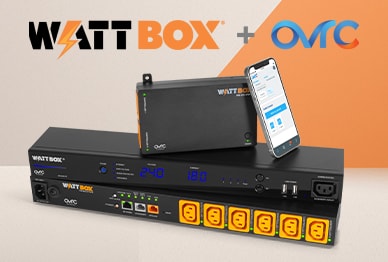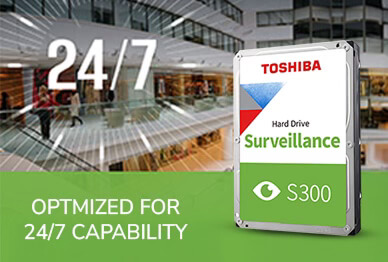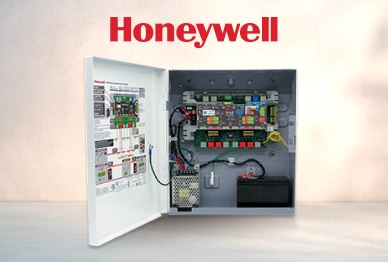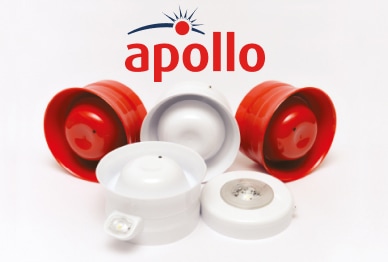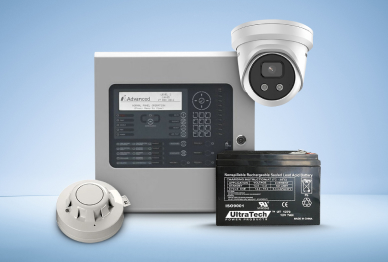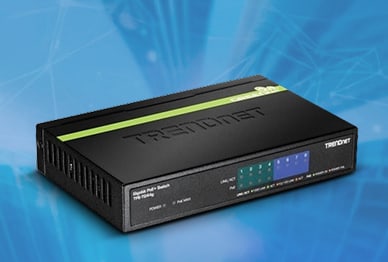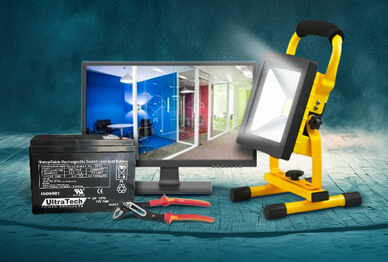Common Battery Technologies
Over the years, the most common battery technologies have improved significantly, offering increased energy density, faster charging capabilities, larger battery capacities, and more cost-effective solutions.
Lead-Acid Batteries
Lead-acid batteries, or flooded batteries, are a reliable and cost-effective power source. According to the Battery Council International (BCI), lead-acid batteries provide 50% of the world's rechargeable power. These batteries are used in a wide range of industries and applications, including Uninterruptible Power Supplies (UPS), data centres, medical facilities, security and public safety sectors, communication networks, and much more. Lead-acid batteries typically have lower energy densities, shorter lifespans, safety risks, and more maintenance requirements than other batteries. However, with enhanced electrode designs and electrolyte formulations, these batteries now have improved energy density, charging capabilities, and durability.
Sealed Lead Acid (SLA) Batteries
SLA batteries are rechargeable, spill-proof batteries based on a lead-acid design. These batteries are also maintenance-free and safer, unlike flooded batteries. With benefits such as high durability and the ability to deliver high surge currents, they are used in fire and alarm systems, UPS systems, emergency lighting, a variety of commercial equipment, and other critical applications requiring backup power or off-grid use. In recent years, Absorbent Glass Mat (AGM) batteries, a type of SLA battery, have gained significant interest. Compared to traditional SLA batteries, AGM batteries offer a higher voltage output and a longer lifespan, even when deep-cycled. They also provide excellent electrical reliability and better recharging efficiency.
Lithium and Lithium-ion (Li-ion) Batteries
Using a liquid electrolyte solution, lithium batteries are one of the most high-performing batteries for electronics. Although they come at a higher price point, these batteries are non-rechargeable but designed to last longer, lasting up to six times more (depending on the manufacturer) than alkaline batteries. Lithium batteries are used for various electronics, including smart security cameras, smoke detectors, powerful tools, and other appliances.
Lithium-ion (Li-ion) batteries are a much-improved version of standard lithium batteries, making them the go-to choice in the industry currently. Because they are rechargeable, Li-ion batteries are more cost-effective in the long run and help reduce waste. One of the most significant improvements in Li-ion battery technology is the increase in energy density, allowing for even longer-lasting battery life. And while Li-ion batteries typically cost more than other batteries, their price has been reduced by 90% over the past decade. Apart from offering reliable power for electronics, Li-ion batteries can also be used for more complex systems, including emergency power backup systems and surveillance or alarm systems.
Upcoming Battery Technologies
With surging demand for more sustainable and green technology, researchers and manufacturers are developing new battery solutions that are more efficient for the environment and safer to use.
Lithium Iron Phosphate Batteries
LiFePO4 batteries, or lithium iron phosphate batteries, offer a safer, longer-lasting, and more stable alternative to traditional lithium-ion batteries. With superior thermal stability and a longer cycle life, they are increasingly used in electric vehicles, renewable energy storage, and portable electronics. Their lower environmental impact and high performance make them a promising solution for future energy needs, particularly in applications requiring reliable, long-term power. As the demand for sustainable energy grows, LiFePO4 batteries are set to play a crucial role.
Solid-State Batteries
Solid-state battery technology is generating anticipation across multiple sectors, from energy storage to electronic vehicles (EV) and consumer electronics, due to its potential to revolutionize the battery industry. Similar to how Li-ion batteries quickly became the preferred battery choice, researchers predict the same will happen to solid-state batteries.
Currently, the most concerning factor about Li-ion batteries is safety, primarily due to their flammable liquid electrolytes that can cause fires or explosions. Solid-state batteries, however, are comprised of non-flammable solid electrolytes, offering a significantly safer solution. Solid-state batteries also promise a wide variety of advantages, including increased battery life, better overall performance, and higher energy densities up to 10 times more than Li-ion batteries. Solid-state batteries can also be developed with a wider range of cheaper and more environmentally friendly materials, making them a more sustainable choice for the future.
Sodium-Ion Batteries (Na-ion)
Sodium-ion battery technology is another upcoming solution to replace lithium-ion batteries. Na-ion batteries offer a more sustainable and lower-cost alternative to Li-ion batteries since sodium is an abundant resource and more accessible than lithium. Similar to solid-state batteries, sodium-ion batteries are comprised of non-flammable electrolytes and offer better charging times. Na-ion batteries currently have lower energy density than Li-ion batteries, making them a better option for stationary energy storage systems. Researchers are continuing to develop sodium-ion battery technology to improve their energy density.
Conclusion
From improved lead-acid and lithium battery designs to new, innovative battery technologies, the future of batteries holds great potential to make security systems more efficient, safer, and sustainable. When choosing the right battery for your projects, consider the device's power consumption, desired runtime, and operating environment. It's also important to ensure the batteries you use comply with relevant safety regulations. To ensure successful system integration, contact our Systems Design team today to be provided with recommendations and best practice knowledge.

